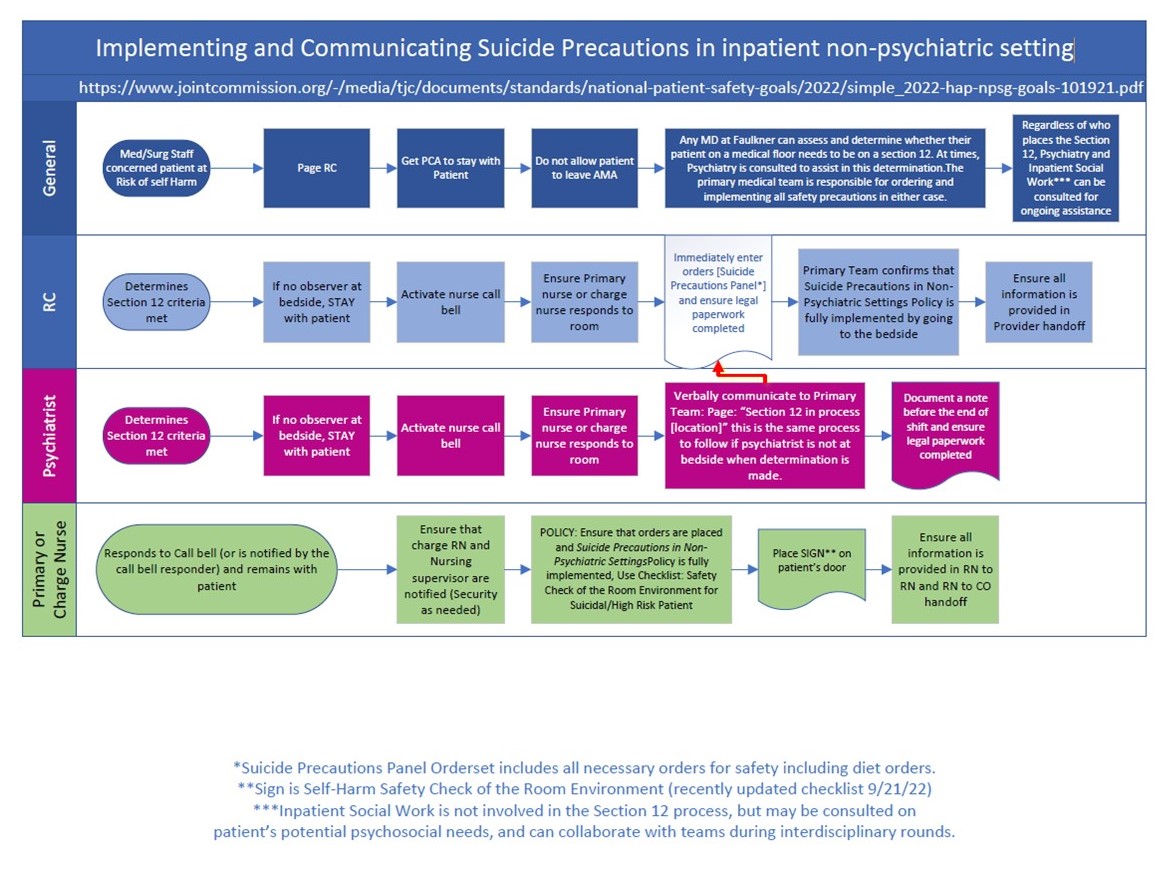
At Brigham and Women’s Faulkner Hospital, patient safety is always a top priority and it’s an area in which we can always improve. A recent process improvement project aimed at enhancing communication related to the care of patients at risk of self-harm highlights just how impactful it can be when staff report patient safety issues in RL Solutions, BWFH’s patient safety reporting system.
“A few months ago, we began to notice a trend of near-miss safety reports with patients on Section 12 on the inpatient, non-psychiatric floors resulting in a delay in implementing safety precautions,” says Beth Uhl-Israel, MBA, CPHRM, CPHQ, Director of Risk Management. “We already have a policy in place designed to help staff mitigate the risk of self-harm in patients under observation for suicidal thoughts, but we found there were delays in implementing those precautions resulting from a lack of standardized communication.”
Upon recognizing the issue, Uhl-Israel assembled a multidisciplinary team of experts in risk management, patient safety and clinical care for a Collaborative Case Review. The result is a new process map designed to guide staff, step-by-step, through the process of implementing and communicating suicide precautions in inpatient non-psychiatric settings.
“Suicidal ideation is frequently seen in the general medical hospital and is a common reason for psychiatric consultation. Once suicidality is identified, communicating the safety risk requires a consistent and stepwise approach to ensure appropriate supervision and safety for the patient,” explains Naomi Schmelzer, MD, MPH, Director of Medical Psychiatry, the consultation service that provides psychiatric care to patients in the Emergency Department and on the inpatient units. “These RL safety reports brought attention to ways that we can improve our understanding of suicidal patients in the general medical hospital and our interdisciplinary communication around their care needs.”
Uhl-Israel says implementing the new process map has been a great example of teams coming together to mitigate risk. “It may seem like a small thing, but it is an example of our collective insistence on a highly reliable system for this very important safety process,” she says. “The process change started at the bedside, with staff informing us of concerns via the safety reporting system. Their efforts are to be commended.”
To read BWFH’s full Suicide Precautions in Non-Psychiatric Settings policy, click here.
Published 10/26/22
Looking for more news from BWFH? Go to News to find articles about health, updates to our programs and services and stories about staff and patients.
Go to News